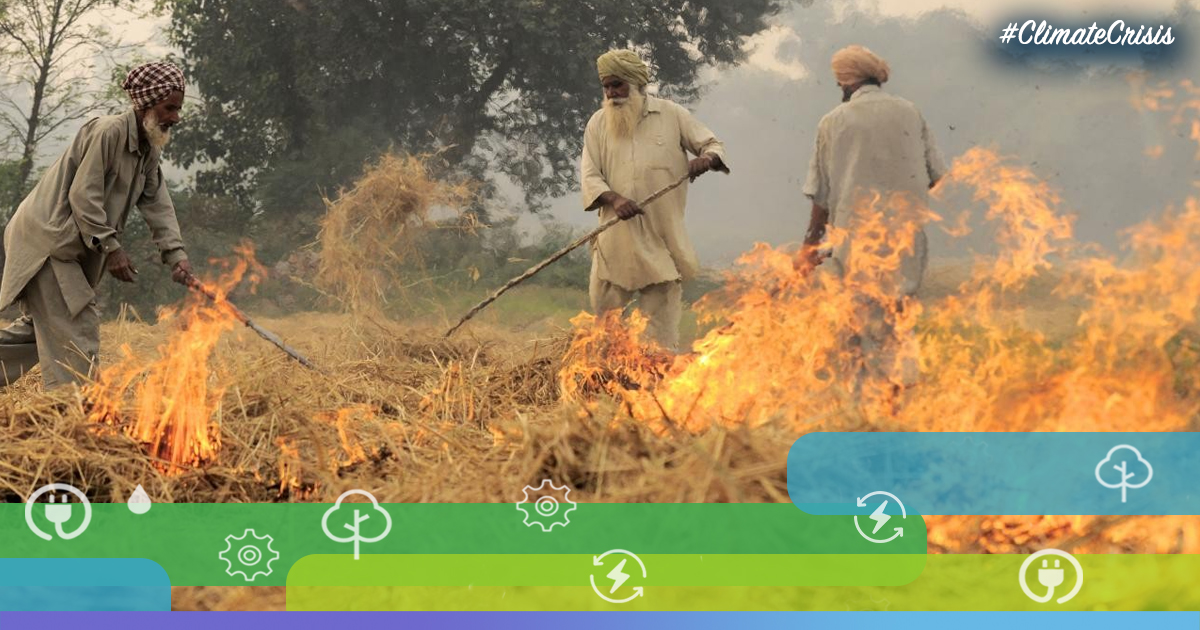As we head into World Environment Day, The Logical Indian will be focusing on the #ClimateCrisis upon us and highlight the harsh realities about the environment we are living in. It will be our effort to bring out the true picture of the situation and offer ideas and solutions to mitigate the problem.
Stubble burning has been a serious issue in Punjab, Haryana and the neighbouring Union Territory of Delhi, creating severe environmental problems and health hazards.
The smog that the state experiences every winter gets aggravated by the toxic gases released from the field that are burnt.
Harrowing as it is, this menace has now travelled down south and taken hold of the rice bowl of Kerala, Kuttanad. Farmers in the region, for the past six years, are setting their paddy fields on fire to remove stubble post-harvest.
According to most of these farmers, this process is a cheaper alternative to removing the stubble manually.
Stubble Burning In Kuttanad
As a part of preparing their fields for the next crop season, farmers are burning stubble to prevent diseases and check the germination of weedy rice. Even though they believe that setting the field on fire improves the fertility of the soil, experts say that the soil is actually robbed of its vital nutrients.
The environmental threat that this practice pose is also overlooked by most of the agricultural community. To begin with, the gases released leave those living near the farms suffocated.
In some cases, the fires have claimed houses and lives of farmers as well.
Due to the burning of fields during the harvest season, rescue operations by fire force personnel increase manifold.
Kuttanad’s economy has also been adversely affected due to stubble burning, as geese are no longer left to feed on the stubble and leftover grain after harvest.
Earlier, tiny goslings would be set free to eat the stubble after water being pumped into the fields. Kuttanad is famous for geese rearing, and goslings fed on the harvest leftovers.
Now, burning the fields have left no food for the goslings. Instead of being reared in Kuttanad, they are now brought in from other areas.
This season, paddy cultivation in more than 30,000 hectares have been undertaken by farmers in Alappuzha district, a major portion of which is situated in Kuttanad.
How Is Stubble Burning Affecting The Environment?
Stubble burning in Punjab and Haryana contributes to a huge amount of air pollution in Delhi.
A widely used process to get rid of the crop residue, stubble burning leads to harmful gases like Methane, Carbon Monoxide, Volatile Organic Compound, and Carcinogenic Polycyclic Aromatic Hydrocarbons being released into the air, causing massive air pollution.
These gases either build a harmful cloud of ash, or end up formulating into smog. These have the ability to travel thousands of kilometres to several other cities, wrecking the air quality index and giving rise to numerous health issues.
The burning of stubble or husk contributes to the brown clouds which hamper atmospheric visibility and becomes a major reason behind climate change.
Farmers resort of stubble burning as the process is easy and the cost is low. It takes additional charge for hiring combine harvesters to do the job.
The need is to go beyond preaching, create better awareness and also find cheaper and easier alternatives so that farmers do not have to burn the fields. Unless immediate steps are taken, the menace will be difficult to control.
This article is part of a campaign to create awareness on environmental issues and the impending #ClimateCrisis.
Also Read: India Urbanizes But Struggles To Tackle Waste Generation











